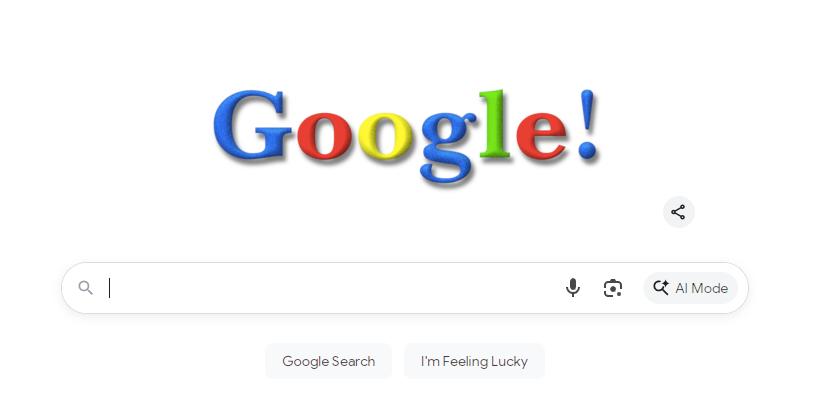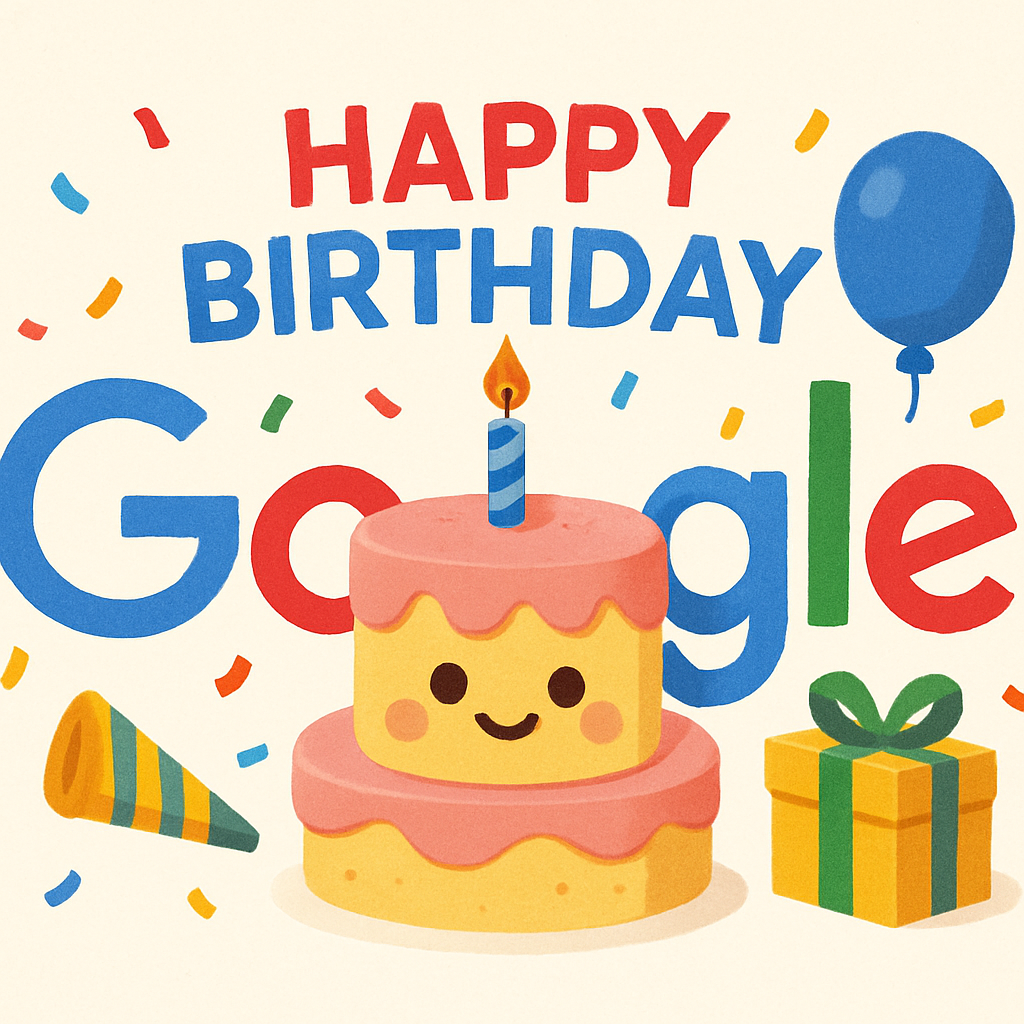Introduction: Why Google Turns 27 Matters
On 27 September 2025, Google celebrates what it has long termed its 27th birthday, and once again commemorates the day with a bespoke Google Doodle on its homepage. While the company’s exact “birthday” has shifted in past years, 27 September has become the chosen date for public celebration.
This modest-looking anniversary carries weight: it’s a moment to reflect on Google’s journey from a Stanford research project to a global tech powerhouse that now touches nearly every corner of our digital lives.
The Origins & The Birthday Debate
The Founding & Early Days
Google traces its origins to 1998, when PhD students Larry Page and Sergey Brin set out to “organise the world’s information and make it universally accessible and useful.” The company was incorporated on 4 September 1998, but its public celebrations of a “Google birthday” have often taken place later in the month.
Over the years, Google has celebrated various dates in September (4th, 7th, 26th), but today 27 September is the de facto date for the official Doodle and public birthday acknowledgement.
So in effect, the “27th birthday” is as much symbolic as factual, born from tradition as much as from a precise anniversary.
The 2025 Google Doodle: A Trip Back to 1998

Design & Symbolism
To mark this 27th anniversary, Google’s Doodle team revived Google’s very first logo from 1998. The Doodle features the original wordmark (in its classic serif typeface) – a visual nod to humble beginnings.
By bringing back the original design, the company signals nostalgia, continuity, and the kind of brand heritage few tech firms enjoy. Users globally (in many countries) saw the vintage logo on their search homepages.
In the Doodle’s accompanying note, Google writes:
“This Doodle marks Google’s 27th birthday. We’re celebrating by getting nostalgic with our first-ever logo. Search on.” NDTV Profit
The juxtaposition of past and future is explicit: the Doodle invites users to look back, but also to keep searching, and evolving.
Colour & Lettering Notes
One interesting detail: in the original logo, the “L” was green, breaking from the red-blue-yellow colour pattern of the other letters. This early design choice is part of the visual heritage being celebrated.
Also, the revival reminds us of how Google’s visual identity has shifted over time: from serif (Catull font) styling to the flat, sans serif, modern logo we see today.
Why This Birthday Matters (Beyond the Numbers)
Symbolic Reflection
At 27, Google has long passed its “startup” days. Yet these anniversaries allow the brand and its audience to pause, reflect, and re-anchor its identity. A Doodle like this serves not just as a birthday card, but as a statement of longevity in an industry known for rapid change.
Cultural & Brand Resonance
When a user sees Google’s “old logo” pop up unexpectedly, it’s jarring in a good way: it invites curiosity, nostalgia, and conversation. For many, it prompts a mental journey: “I remember when Google looked like that.” That helps maintain emotional connections to the brand.
It also subtly reinforces Google’s authority over time: the message is, “We’ve been here long enough to have a legacy.” That’s a powerful position in tech, where freshness often competes with trust.
A Platform for Future Messages
Often these birthday Doodles are paired with product tie-ins, feature announcements, or soft nudges toward new services (such as AI tools, search updates, or new interfaces). The nostalgia opens the door for the brand to point forward as well as backward.
A Look Back: Google Doodles & Their Legacy
Google Doodles have evolved into something much more than simple logo tweaks. They’ve become mini storytelling platforms, celebrating holidays, people, events, science, culture, and local milestones.
- The very first Google Doodle appeared in 1998, when Page and Brin placed a stick figure behind the second “o” to signal they were off at the Burning Man festival.
- Over time, Google created a team of “Doodlers”, illustrators, engineers, animators, dedicated to crafting these special logos.
- Some Doodles are interactive or playable (e.g. a Pac-Man Doodle, or a guitar you can strum). Others are animated or even video.
- Doodles often reflect local or national personalities or events: what appears in the UK might differ from what appears in India or Brazil.
In celebrating the 27th birthday with a Doodle, Google is also reaffirming that this feature remains a core piece of its brand identity and cultural engagement.
Challenges & Curiosities Around the “Birthday”
The Date Quandary
As mentioned earlier, Google’s “birthday” continues to be a bit ambiguous. While 4 September is its incorporation date, the company has used multiple dates in the past. 27 September was originally the date of the first public birthday Doodle, which eventually stuck as tradition.
So when we say “27th birthday,” we should remember: it’s a brand tradition as much as a chronological fact.
Visibility & Reach
Not every user worldwide sees the same Doodle. Some regions may not get the birthday Doodle (depending on local events, time zones, or product priorities). But tradition suggests that most major markets will display the Doodle, especially in English-speaking ones.
Beyond the Doodle: The Real Impact
A logo change, even a temporary one, is symbolic. But the enduring impact lies in how the company uses the moment: press coverage, user engagement, social media buzz, especially in the UK and globally. The Doodle gives a reason for users, journalists, and fans to talk about Google’s past, present, and future.
Google’s 27th birthday is more than just a date, it’s a branding moment, a cultural touchstone, and a reminder of how far the company has come. The Doodle that revives the original 1998 logo gives users a hint of nostalgia, but it also invites them to look forward.
As Google continues to evolve in AI, search, cloud, and consumer tools, these anniversary markers help keep the human side in view: the story behind the screens. For users in the UK and beyond, the Doodle is a moment to pause, reflect, and perhaps smile: how amazing that a company born in a garage is now woven into daily life.
















